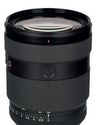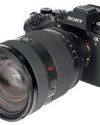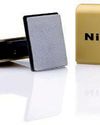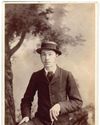
The Leica D-Lux 8 is an advanced zoom compact camera that's designed for enthusiast shooters. It's a development of the D-Lux 7 from 2018, which itself was a re-styled version of the Panasonic Lumix LX100 II.
The D-Lux 8 has the same lens, sensor, and core specifications as its predecessor. But it gains a radically reworked control layout based on the Leica Q3, along with a much better viewfinder.
It's no secret that the ever-increasing quality of smartphone cameras has decimated the market for compact cameras.
But there's one standout exception, with Fujifilm's X100VI being so popular that it's still back-ordered six months after its launch. With the D-Lux 8, Leica is clearly hoping to grab a piece of the action with a camera that shares many of the same attractions, but has a zoom lens.
Like the X100VI, the D-Lux 8 boasts traditional photographer-friendly controls for the main exposure settings, plus a corner-mounted viewfinder in a flat-bodied rangefinder-style design. But in contrast, it employs a 24-75mm equivalent zoom lens with a bright f/1.7-2.8 aperture. This is paired with a Four Thirds sensor with a clever multi-aspect ratio design. It's even a bit less expensive, at £1,450 vs £1,600. There's plenty to like here, but how does it compete against its popular rival?
Features
In terms of specifications and features, the D-Lux 8 is pretty much identical to the D-Lux 7, and therefore the Lumix LX100 II.
As before, it's built around a 20MP Four Thirds sensor, but employs it in a unique way.
It never uses the entire sensor area to create images, but instead crops in to offer a range of aspect ratios with the same diagonal angle of view.
Esta historia es de la edición September 10, 2024 de Amateur Photographer.
Comience su prueba gratuita de Magzter GOLD de 7 días para acceder a miles de historias premium seleccionadas y a más de 9,000 revistas y periódicos.
Ya eres suscriptor ? Conectar
Esta historia es de la edición September 10, 2024 de Amateur Photographer.
Comience su prueba gratuita de Magzter GOLD de 7 días para acceder a miles de historias premium seleccionadas y a más de 9,000 revistas y periódicos.
Ya eres suscriptor? Conectar

Calling The Shots: A Queer History of Photography
Offering an unprecedented view of photographic history through a queer lens, this is a wonderful and powerful book, says

Large-aperture standard zoom, too
SONY has also revealed a new premium standard zoom, the FE 28-70mm F2 GM.

Super-fast, high-res Sony Alpha Ai II
SONY has announced its new professional full-frame flagship camera, the Alpha A1 II.

39 awesome accessories
Our round-up of the best accessories we've used and reviewed this year, along with some old favourites. There's something here for every budget, starting from just £7, including tripods, bags, filters and much more

Such a thing as society
This autumn sees the launch of a major new book and exhibition devoted to examining the multiplicities of photography during 1980s Britain. Peter Dench finds out more

Join Club
The sociable Canvey Island Photographic Club is keen to grow its in-person meet ups

Capturing flight
Winners and finalists of Bird Photographer of the Year share their tips for success with Hollie Latham Hucker

140 years of change
AP has become the world’s oldest surviving consumer photo magazine because we have moved with the times, says Nigel Atherton

Preserving history in platinum
A deep dive into the meticulous art of platinum printing, and the collaboration between the Royal Geographical Society and Salto Ulbeek. Mike Crawford explores how they brought historical photographs to life with enduring beauty and precision

Life in the past lane
What was life like for an amateur photographer in 1884? John Wade takes a trip back in time